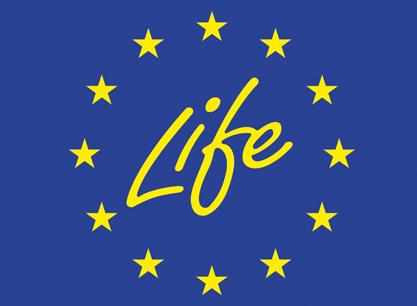LIFE Phos4EU: making use of what is there
From waste to raw material. When purifying wastewater, residual materials such as phosphate remain. With the Vivimag technology we can remove phosphate from the sludge for reuse. For example, as a raw material for various applications such as fertilizer.LIFE Phos4EU is a collaboration between international partners and receives support from the EU. The project runs until 2027 and consists of a number of pilots and a full-scale demo to prove the unique Vivimag technology at various locations. In this way the project contributes to a circular world and ensure less waste and cleaner wastewater
Projectcode |
432.780 |
Uitvoerders |
Acciona, Aquaminerals, Waterschap Brabantse Delta, Waterschap Limburg, STOWA |
Thema |
Circulaire economie, Produceren van grondstoffen |
Startdatum |
|
Einddatum |
|
Tags |
LIFE Phos4EU is an international collaboration of Waterbedrijf Limburg (WBL), Waterschap Brabantse Delta (WBD), Acciona Spain, Aquaminerals and STOWA. The project is lead by Waterschap Brabantse Delta and STOWA, together with partners Wetsus, Delft University, the European Sustainable Phosphorus Platform, ICL, Waterschap Rijn en IJssel and partners in Danmark and Italy.

At various sites in The Netherlands and Spain, the Vivimag technology is tested to proof its potential for recovering phosphorus from sewage sludge and its application as basis for business application. The program will run until 2027.
Project goal
Vivimag is a promising technology to recover phosphate in a form – vivianite or phosphoric acid – that is expected to be in high demand from the market. The aim of this LIFE project (LIFE22-ENV-NL-LIFE Phos4EU – 101113877) is to demonstrate on a demo scale that Vivimag can make an important contribution to further sustainability by the water boards through far-reaching raw material recovery. Work is also being done to develop the most promising routes for marketing the innovative technique. Vivimag is an innovative technology that recovers phosphate from sludge in the form of vivianite with a high efficiency. The recovered vivanite is of high quality, which increases the sales potential. With the support of STOWA, the Brabantse Delta Water Board, Wetsus and Kemira have demonstrated that the Vivimag technology is successful on a pilot scale. Kemira is the patent holder of the technology; the Dutch water boards may apply these licence-free. Brabantse Delta wants to take the next step by demonstrating the technology on a larger scale and organizing sales. Aquaminerals was approached to organize the sales.
The project builds on the successful pilot that ran at the Nieuwveer WWTP in 2018, in which it was proven that 60-75% of the incoming phosphorus is recovered in the form of vivianite, which also results in a 20% sludge reduction (Wijdeveld, Water Research 212(2022)). Kemira is currently building a new pilot for other (foreign) WWTPs that will generate new knowledge, which will be used in this project. In addition, these pilots provide the necessary knowledge for the WWTPs with ordinary activated sludge and WWTPs with and without sludge fermentation. Knowledge transfer takes place in the Wetsus theme phosphate.
Vivianite (Fe3(PO4)2·8(H2O)) is formed in the waterline and in fermentation. This is done by dosing iron for dephosphation. The vivianite is removed from the thickened sludge before the sludge is dewatered. This is done with magnets. Vivianite has the property of being paramagnetic. This means that it becomes magnetic as soon as it gets to a magnet. The vivianite sticks to the magnet and releases as soon as the magnet is de-energized.
Demonstration Plant
The planned demonstration plant will process 1/3 to 2/3 of the total sludge volume and produce 80 to 160 kg of vivianite per hour. This depends on the amount of sludge that is recirculated and this will be optimized within this project. The design of the demo is now based on 2 magnets of 9 m3/h that can be connected in parallel and in series. Both setups will be tested to determine the optimum in terms of business case and the required vivianite quality.
Based on these results, the demonstration will be scaled up to 100% of the sludge volume. The equipment is robust. The magnets are readily available on the market and are used in the mining industry. In business operations, setting up properly to obtain a good separation efficiency is an optimization step that is further developed with the demonstration.
The pilot study has shown that a 0.5mm hole filter is needed to remove hairs and that a washing step is required to minimize the amount of organic matter in the vivianite. This is expected to meet the quality requirements of the market, which will also be demonstrated with this project.
In the project, 2 sales routes for vivianite will be developed for which there is already an existing market (study Aquaminerals for EFGF):
- As a vivianite fertilizer. There is an existing vivianite market in olive and orange cultivation.
As a phosphate fertilizer (phosphoric acid), whereby recovered iron is reused at the WWTP
Partners
Partners in thia LIFE-project are: Brabantse Delta, Waterschapsbedrijf Limburg, Aquaminerals, Acciona and STOWA.

 English resume
English resume